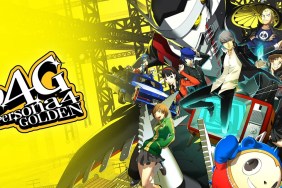Dude, where’s my street cred?
The instant you start Need for Speed: ProStreet, you’ll spot the changes. Gone is the “buster” dialogue. Gone is the suicidal driving against traffic. Gone are the mean streets of the city. Everything that has made the Need for Speed series distinctive over the years has given way to something lighter, brighter, and much more dude-ified. The series has undergone a drastic change. Perhaps incarceration was involved. After serving some time, the series has been transformed and has reemerged a toned down and nearly unrecognizable game.
[image1]If the Tony Hawk Pro Skater series had veered into custom street racing, the end product would look a lot like ProStreet. The game ditches the urban vibe of prior installments, and instead, drives full force into a crate full of corny dude-speak. The dialogue has always been laughably bad in the series, but it’s almost always had the flavor of the buster, the guy who tries too hard to sound and look “street”. Now, though, everything looks and sounds like a bad surfer movie. Hip-hop has become pop-punk. Streets have become legitimate race courses. Dude-isms abound. You’ll now have to look elsewhere to race against hordes of gangbanging posers.
In the world of ProStreet, underground street racing is just another extreme sport. No longer is the game about dominating a city’s street racing circuit; you’ve left the city blocks and headed to the outskirts where you can safely race without the interference of pesky cops and bothersome city traffic. Thing is, those “pesky cops” and “bothersome city traffic” were what made the prior games interesting.
ProStreet foregoes the open-world design of its predecessors and is instead organized by a more conventional tier system. Complete one set of races to continue to the next. In career mode, you compete in a series of “race days” that combine a number of racing events together. For example, in a given race day, you might compete in a couple of drag races, a drift race, and a circuit race or two. Competitions are varied and include the old standards of the series like circuit racing, drift competitions, and drag racing, as well as new events like wheelie competitions and a time attack mode that starts each vehicle at timed intervals.
The most technically challenging race type of the prior Need for Speed games was always drift racing. Driving up and down hills, through parking lots, and in the face of oncoming traffic all while trying to increase your drift multipliers was manic and loads of fun. In ProStreet, however, because the whole racing scene’s been cleaned up and moved out of the heart of the cities, the intensity of the drift races is gone. Not just that, but driving mechanics have been toned down so you no longer feel the same arcade-like exaggeration of your insane drifts. It all feels a little too real – and a little too bland.
The three difficulty levels are odd as well. On easiest, the game will assist you in braking and steering through turns; on medium, you’ll receive assists in braking; and on hard, you’ll receive no assists. Assists? Really? This is no Formula-1 racing, folks. ProStreet would have you believe that it’s a technically demanding racing sim, but don’t be fooled.
[image2]There are some other signs that the developers were trying to fool us into believing that this game is a racing sim. For example, they also thought it would be a good idea to show you the best line through turns, ala Gran Turismo. But like the assists, these don’t make the game feel any more like a simulation. The best line is just a very loose guideline that changes color depending on your speed through a turn. If the arrows on the line are green, you’re going too slow. If they’re red, you’re going too fast.
The major problem with the best line feature makes itself painfully obvious very quickly. In ProStreet, the changing colors are all but useless and seriously distracting. Instead of giving you the most pertinent information like when you should accelerate or slow down, the red and green colors only tell you how much you’re deviating from the recommended speed for that particular turn. In contrast, a useful best line feature (like that found in the Gran Turismo games) tells you where to accelerate and brake through a turn, but it does not give you a pre-determined speed. Luckily, you can turn the feature off.
Overall, the game tries to go too far into racing sim territory. This is not nor has it ever been the series’ strength. Many other games already do sim-style racing far better. Cars in ProStreet are heavier than they’ve ever been in the series, and vehicle damage is more of a hassle than an interesting feature. True, the Need for Speed series has been in need of a change for some time, but these were not the changes we were hoping for. The series used to stand out for its many unique features and its unique presentation, but it now looks like an also-ran in a genre full of look-alike racers.
ProStreet’s greatest strength is its robust online features. These have continued to grow and improve with each successive iteration, so they’re better here than they’ve ever been. If ProStreet were only the sum of its online features, it’d be a far, far better game. Not only can you compete in any of the many different competition styles, you can also customize your own race day by organizing your own series of events.
Leaderboards include not just best times and scores, but they also track the most successful tuning jobs. You can also share your tuning blueprints, and the customization options for your cars are endless. Virtual gearheads can trade virtual quips about the virtual benefits of the smallest of virtual tuning details for their virtual vehicles. Forget keeping it real; it’s far better to keep it virtual.
[image3]The graphics engine is slick, but since environments are all desert wastelands and there are no longer any elaborate cityscapes to traverse, there’s not much to appreciate. Car models look convincing, but you’re much more likely to ogle the curvaceous women in the game rather than the curvaceous cars. The framerate is mostly consistent, but in a racing game I would much rather have a completely consistent lower framerate than a higher framerate that suffers occasional dips, no matter how infrequent.
Since the series has shifted gears from a highly exaggerated underground arcade-style racer to a watered-down sim racer, Need for Speed is now facing off against a battalion of other well-established racing games. While the series used to be a fun alternative to mainstream racers, it’s now just another mediocre pro-style game. Its online features give this game a big boost, and you’ll be hard-pressed to find many of these events in any other game. There’s a lot of content on offer, and if you can get past its saccharine veneer, ProStreet could keep you busy for a long time.
-
Killer online features
-
Bitchin' customizable options
-
Rad variety of events
-
No cities?! Lame, man.
-
Dopey best line tool.
-
Drifting isn't gnarly enough.
-
Dude, dialogue, like, totally sucks, dude.










